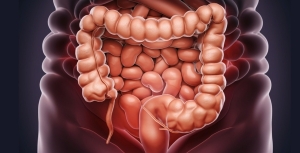cisa
Risky Habits, Such as Alcohol Consumption, Increase the Chances of Brazilian Adolescents Developing Non-Communicable Chronic Diseases
October 29, 2024Risky Habits, Such as Alcohol Consumption, Increase the Chances of Brazilian Adolescents Developing Non-Communicable Chronic Diseases
A study conducted by researchers from UFMG and Unifesp indicates that the majority of Brazilian adolescents have two or more risk factors for developing non-communicable chronic diseases (NCCDs), with alcohol consumption being among them.
Health risk behaviors may emerge or intensify during adolescence, exposing individuals to an even greater risk of developing NCCDs. The likelihood of presenting multiple health risk factors also increases over a lifetime, being associated with sociodemographic characteristics that contribute to their escalation and severity.
This is revealed by a study conducted by the Federal University of Minas Gerais (UFMG) and the Federal University of São Paulo (Unifesp), published in BMC Pediatrics, which analyzed the association between sociodemographic characteristics and multiple behavioral risk factors for NCCDs in Brazilian adolescents.
The analysis used data from the National Survey of School Health (PeNSE, 2019), with a sample of over 121,000 adolescents. The survey included students aged 13 to 17 who were enrolled and regularly attending from 7th to 9th grade of elementary school and from 1st to 3rd year of high school.
The study results showed that over 80% of adolescents presented two or three behavioral risk factors for NCCDs, with only 3.9% of adolescents having no risk factors. Furthermore, older adolescents, particularly those residing in the Southeast region of Brazil and those with self-perceived health issues, were found to be more likely to have risk factors for NCCDs.
The most prevalent behavioral risk factors among adolescents were:
- Lack of physical activity (71.5%)
- Irregular intake of fruits and vegetables (58.4%)
- Sedentary lifestyle (54.1%)
- Regular consumption of sweets (32.9%)
- Alcohol consumption (28.1%)
- Regular consumption of soft drinks (17.2%)
- Smoking (6.8%)
According to the study, a comparative analysis between the 2015 and 2019 editions of PeNSE indicated a reduction in the consumption of fruits and vegetables, a decrease in physical activity, and an increase in episodes of drunkenness among adolescents. The rising use of alternative tobacco products, such as hookah and electronic cigarettes, and the high consumption of ultra-processed foods among youth were also cited as concerns nationwide.
Brazil faces significant challenges in promoting health among its adolescent population. There is an urgent need for dynamic and proactive approaches that empower young people to take responsibility for their health. At the same time, the implementation of public and educational policies is crucial for adopting better lifestyle and health practices.
References:
- da Silva, A. G., Souza, J. B., Gomes, C. S., da Silva, T. P. R., Gomide Nogueira de Sá, A. C. M., & Malta, D. C. (2024). Multiple behavioral risk factors for non-communicable diseases among the adolescent population in Brazil: the analysis derived from the Brazilian national survey of school health 2019. BMC pediatrics, 24(1), 122.
Can Alcoholic Beverages Combat Food Poisoning?
October 29, 2024Can Alcoholic Beverages Combat Food Poisoning?
In general, ethanol is known for its ability to kill bacteria and viruses, but its effectiveness depends on concentration and exposure time. Ethanol at concentrations between 60% and 85% is effective in eliminating a wide range of microorganisms, but this efficacy is limited to external use, such as in hand sanitizers and surface disinfectants (1).
Recently, a video went viral on social media showing a woman taking a shot of alcohol to “prevent” possible food poisoning, based on the idea that alcohol is a disinfectant. While it is true that alcohol can kill bacteria and is used to sterilize surfaces, the effectiveness of this action is limited to external use, such as on skin and exposed surfaces (1). In the case of consuming contaminated food, ingested alcohol does not function the same way inside the body, as pathogens may have already crossed the natural barriers of the digestive system before the alcohol can inactivate them. Additionally, the effects of alcohol within the body are much more complex and, in large quantities, can even compromise the immune system, making recovery more difficult (2).
Some small studies suggest that alcohol may, under certain circumstances, protect against food poisoning, especially when consumed along with contaminated food. For example, a study conducted during a Salmonella outbreak in Spain indicated that those who consumed alcoholic beverages were less likely to develop symptoms of food poisoning compared to those who did not consume alcohol (3). Another study conducted in Florida in 1992 focused on a Hepatitis A outbreak transmitted by oysters. Researchers found that participants who consumed high-alcohol-content beverages (over 10%) were significantly less likely to become ill (4).
Despite the results, these studies have important limitations. Most research supporting the idea that alcohol could reduce the risk of food poisoning is observational and small-scale, meaning we cannot be certain that alcohol was the factor responsible for the protection.
The fact is that excessive consumption can weaken the immune system, making the body more susceptible to infections. Studies show that chronic and excessive alcohol use reduces the effectiveness of immune responses, diminishing the body’s ability to fight bacterial and viral infections (2,5). Furthermore, alcohol can cause dehydration, which may worsen food poisoning symptoms.
While there is some evidence that alcohol may offer protection against food poisoning under certain circumstances, relying on alcohol as a preventive measure is not recommended. It is much more effective to adopt safe food handling practices, such as avoiding cross-contamination, cooking food to appropriate temperatures, storing it correctly, and not leaving perishable foods at room temperature for long periods. When eating out, pay attention to the cleanliness of the establishment, check its reputation, and ensure it has a sanitation license and provides information about the food. These strategies are especially important for vulnerable groups, such as young children, the elderly, and people with compromised immune systems.
References:
- Sauerbrei A. (2020). Bactericidal and virucidal activity of ethanol and povidone-iodine. Microbiology Open, 9(9), e1097. https://doi.org/10.1002/mbo3.1097
- Pasala, S., Barr, T., & Messaoudi, I. (2015). Impact of Alcohol Abuse on the Adaptive Immune System. Alcohol research : current reviews, 37(2), 185–197.
- Bellido-Blasco, J. B., Arnedo-Pena, A., Cordero-Cutillas, E., Canós-Cabedo, M., Herrero-Carot, C., & Safont-Adsuara, L. (2002). The protective effect of alcoholic beverages on the occurrence of a Salmonella food-borne outbreak. Epidemiology (Cambridge, Mass.), 13(2), 228–230. https://doi.org/10.1097/00001648-200203000-00020
- Desenclos, J. A., Klontz, K. C., Wilder, M. H., & Gunn, R. A. (1992). The protective effect of alcohol on the occurrence of epidemic oyster-borne hepatitis A. Epidemiology (Cambridge, Mass.), 3(4), 371–374. https://doi.org/10.1097/00001648-199207000-00013
- Tharmalingam, J., Gangadaran, P., Rajendran, R. L., & Ahn, B. C. (2024). Impact of Alcohol on Inflammation, Immunity, Infections, and Extracellular Vesicles in Pathogenesis. Cureus, 16(3), e56923. https://doi.org/10.7759/cureus.56923
History of Alcohol
September 30, 2024History of Alcohol
It is believed that alcoholic beverages originated in Prehistory, specifically during the Neolithic period when agriculture appeared and pottery was invented.
Did you know that...
- Alcoholic beverages emerged by chance during the Neolithic period in prehistory? (1,2)
- The regulation of wine trade became more consistent starting in the Middle Ages? (3,4)
- Proletarian Russian women in the early 20th century would put distilled liquor on pacifiers to soothe their children? (5)
- In 18th century England, gin was known as the drink of choice for women? (6)
- Despite the long-standing criticism of alcohol abuse throughout human history, the concept of alcoholism only emerged in the late 18th and early 19th centuries? (7)
When it all began...
Alcoholic beverages are believed to have originated in Prehistory, specifically during the Neolithic period, when agriculture and pottery emerged. Through a process of natural fermentation that occurred about 10,000 years ago, humans began to consume alcohol and ascribe different meanings to its use. The Celts, Greeks, Romans, Egyptians, and Babylonians recorded in some form the consumption and production of alcoholic beverages. (1,2)
Noah's Drunkenness
In na episode from the Bible´s Old Testament (Genesis 9:21), Noah, after the flood, planted a vineyard and made wine. He consumed the beverage to the point of becoming drunk. The Bible states that Noah shouted, took off his clothes, and passed out. Moments later, his son Ham found him "uncovered in his nakedness." This is the first known account of drunkenness. The famous Renaissance painter Michelangelo (1475-1564) was inspired by this episode to create a beautiful fresco, titled after it, on the ceiling of the Sistine Chapel in the Vatican. Thus, it is evident that not only the use of alcohol but also drunkenness has been present among humanity since its beginnings.
Alcohol Throughout History
Greece and Rome
The soil and climate in Greece and Rome were especially rich for grape cultivation and wine production. The Greeks and Romans also knew the fermentation of honey and barley, but wine was the most widespread beverage in both empires, holding social, religious, and medicinal importance. (1,8)
In Ancient Greece, the playwright Euripides (484 BC - 406 BC) mentions in the Bacchae two deities of great significance to humans: Demeter, the goddess of agriculture who provides solid food for nourishment, and Dionysus, the God of wine and festivity (Bacchus for the Romans). Despite wine playing an active role in Greco-Roman social and religious celebrations, alcohol abuse and drunkenness were already severely censured by both peoples. (1)
Ancient Egypt
The Egyptians documented the stages of beer and wine production, manufacturing, and trade in papyrus. They also believed that fermented beverages eliminated germs and parasites and should be used as medicine, especially in the fight against parasites from the waters of the Nile. (1,2)
Middle Ages
The commercialization of wine and beer grew during this period, as did its regulation. Alcohol intoxication (drunkenness) ceased to be merely condemned by the church and began to be considered a sin by this institution. (4)
Modern Age
During the Renaissance, oversight of cabarets and taverns began, with operating hours established for these places. Cabarets and taverns were seen as venues where people could express themselves freely, and the use of alcohol was part of political debates that would later trigger the French Revolution. (4)
Contemporary Age
The late 18th century and the onset of the Industrial Revolution were accompanied by demographic and behavioral changes in Europe. It was during this period that excessive drinking began to be viewed by some as a disease or disorder (7). In the early to mid-19th century, some scholars began to discuss the differences between distilled and fermented beverages, especially wine. Consequently, finding no harmful germs in wine, French scientist Louis Pasteur declared in 1865 that "this is the most hygienic of beverages." (9)
During the 20th century, countries like France established the legal drinking age at 18, and in January 1920, the United States enacted Prohibition, which lasted almost 12 years. Prohibition banned the manufacture, sale, barter, transport, importation, exportation, distribution, possession, and consumption of alcoholic beverages and was considered by many a disaster for public health and the American economy, as it created an illegal market for alcohol and consequently increased violence and crime in the country. (11)
It was in 1952, with the first edition of the DSM-I (Diagnostic and Statistical Manual of Mental Disorders), that alcoholism began to be treated as a disease. (7, 10)
In 1967, the concept of alcoholism as a disease was incorporated by the World Health Organization into the International Classification of Diseases (ICD-8), following the 8th World Health Conference. In the ICD-8, problems related to alcohol use were placed within a broader category of personality disorders and neuroses. These issues were divided into three categories: dependence, episodes of excessive drinking (abuse), and habitual excessive drinking. Alcohol dependence was characterized by compulsive use of alcoholic beverages and the manifestation of withdrawal symptoms after cessation of alcohol use. (14)
In modern times, starting in January 2022, the ICD-11 came into effect, bringing important updates to the general guidelines of the document, including specific updates on alcohol use disorders (15), which are:
- Greater specification of different patterns of harmful alcohol consumption, which can be continuous, episodic, and recurrent;
- A new diagnostic subcategory for single episodes of harmful consumption;
- The introduction of harmful alcohol consumption as a life risk factor;
In addition to other more technical nuances regarding the categorization of certain disorders, such as neurocognitive disorders related to alcohol use (15).
References:
1.Viala-Artigues, J. & Mechetti,C. (2003). Histoire de l´alcool archéologie partie 1.
2. McGovern, Patrick E. The Origins and Ancient History of Wine. (http://www.museum.upenn.edu/new/exhibits/online_exhibits/wine/wineintro.html).
3. Liappas,J.A., Lascaratos, J., Fafouti, S., Christodoulou, G.N., (2003). Alexander the Great´s relationship with alcohol. Addiction. 98. 561-567.
4. Viala-Artigues, J. & Mechetti,C. (2003). Histoire de l´alcool archéologie partie 2.
5. Phillips, L. (1999). In defense of their families: Working-Class Women, Alcohol, and Politics in Revolutionary Russia. Journal of Women´s History. Vol. 11. 97-120.
6. Warner,J. & Ivis, F. (2000). Centre for Addiction and Mental Health, Toronto. Eighteen-Century Life. 24. 85-105
7. Jerome, H.J. (1993). The concept of dependence: Historical Reflections. Alcohol Health and Research World. 17. 188-190.
8. Purcell, N. (2003). Diet, Community, And History At Rome. American Journal of Philology. 124. 329-358
(http://www.press.jhu.edu/journals/american_journal_of_philology/)
9. Viala-Artigues, J. & Mechetti,C. (2003). Histoire de l´alcool les temps modernes partie 1
10. Viala-Artigues, J. & Mechetti,C. (2003). Histoire de l´alcool les temps modernes partie 2
11. History of Alcohol. Alcohol and Tobacco Tax and Trade Bureau. US Department of Treasure
12.Lexicon of alcohol and drug terms – Organização Mundial de Saúde (OMS), 1994.
13.The natural history of alcoholism - George E. Vaillant. Harvard University Press, 1983.
14. Diagnostic Criteria for Alcohol Abuse and Dependence – National Institute on Alcohol Abuse and Alcoholism (NIAAA) - Alcohol Alert, No 30, 1995 (http://pubs.niaaa.nih.gov/publications/aa30.htm)
- Saunders JB, Degenhardt L, Reed GM, Poznyak V. Alcohol Use Disorders in ICD‐11: Past, Present, and Future. Alcohol Clin Exp Res [Internet]. 2019 Aug 23 [cited 2020 Jun 23];43(8):1617–31. Available from: https://onlinelibrary.wiley.com/doi/abs/10.1111/acer.14128
How Harmful Alcohol Use Affects Your Work Relationships
September 30, 2024How Harmful Alcohol Use Affects Your Work Relationships
Alcohol is linked to absenteeism and presenteeism in the workplace, new studies show.
Intuitively, alcohol and work are two things that don’t mix. Alcohol is a central nervous system depressant and can impact work performance in various ways, including absences, accidents, disputes and fights, dismissals, among other types of productivity and income loss. However, the real extent of the impact of harmful alcohol use on work and the economy has been continuously studied, and new research reiterates the dangers of this combination (1-3). It is known that rates of excessive alcohol consumption can be higher in certain sectors, such as construction and arts and entertainment, and among specific groups, such as workers nearing retirement and younger individuals (4). Some people may also mistakenly use alcohol as a resource to cope with work-related stress. For context, the International Labour Organization (ILO) indicates that 20% to 25% of workplace accidents worldwide involve individuals under the influence of some type of drug, and that 3% to 5% of the working population has alcohol dependence while 25% are at-risk users (5).
Alcohol consumption at work facilitates the occurrence of accidents, likely due to the impairments it causes in coordination and balance, increased reaction time, judgment alterations, decreased visual acuity and field of vision, as well as reduced concentration and reasoning abilities (6).
In addition to these direct aspects, alcohol consumption affects work through increased absenteeism rates, which include absences or lateness without prior justification. A recent literature review indicates that heavy drinkers have higher rates of absenteeism than moderate drinkers, who in turn have higher rates than non-drinkers (3). A recent U.S. study analyzing data from the national survey on drug use and health between 2015 and 2019 found that individuals with alcohol use disorders contributed annually to over 232 million days of absenteeism combined.
Another study sought to analyze the relationship between alcohol and absenteeism using data from 15 countries, encompassing 439,000 employed individuals. The study reports that cross-sectional surveys [*1] indicate an 8 times greater risk of absenteeism in individuals who consume alcohol at risky levels.
The research underscores the need for informational campaigns, prevention, and treatment of alcohol-related disorders in the workplace. Programs aimed at preventing and reducing harmful alcohol use in the workplace can benefit employees, employers, and society as a whole. Some studies show promising results from programs focused on changing workplace culture, general health promotion, and brief interventions (4).
Finally, it is important to emphasize that harmful alcohol use, besides worsening work performance, can make it even more difficult to cope with issues like stress, pressure, and anxiety, which are so common in contemporary work environments. Therefore, if you feel you are using alcohol to cope with any problems, seek specialized help from a healthcare professional. For employers, if you notice that employees are engaging in harmful alcohol use, it is important to consider programs that offer information and assistance to prevent the negative outcomes associated with alcohol and work.
*1 Research conducted at a single moment, representing a “snapshot” of the studied aspects, in contrast to longitudinal studies, which collect data over several distinct time periods.
References:
- Hashemi NS, Skogen JC, Sevic A, Thørrisen MM, Rimstad SL, Sagvaag H, et al. A systematic review and meta-analysis uncovering the relationship between alcohol consumption and sickness absence. When type of design, data, and sickness absence make a difference. PLoS One [Internet]. 2022 Jan 1 [cited 2022 May 6];17(1):e0262458. Available from: https://journals.plos.org/plosone/article?id=10.1371/journal.pone.0262458
- Parsley IC, Dale AM, Fisher SL, Mintz CM, Hartz SM, Evanoff BA, et al. Association Between Workplace Absenteeism and Alcohol Use Disorder From the National Survey on Drug Use and Health, 2015-2019. JAMA Netw Open [Internet]. 2022 Mar 1 [cited 2022 May 3];5(3):e222954–e222954. Available from: https://jamanetwork.com/journals/jamanetworkopen/fullarticle/2790205
- Marzan M, Callinan S, Livingston M, Leggat G, Jiang H. Systematic Review and Dose–Response Meta-Analysis on the Relationship Between Alcohol Consumption and Sickness Absence. Alcohol Alcohol [Internet]. 2022 Jan 8 [cited 2022 May 6];57(1):47–57. Available from: https://academic.oup.com/alcalc/article/57/1/47/6144823
- Ames, G. M., & Bennett, J. B. (2011). Prevention interventions of alcohol problems in the workplace. Alcohol research & health : the journal of the National Institute on Alcohol Abuse and Alcoholism, 34(2), 175–187.
- OIT. ORGANIZAÇÃO INTERNACIONAL DO TRABALHO • GENEBRA PROBLEMAS LIGADOS AO ÁLCOOL E A DROGAS NO LOCAL DE TRABALHO UMA EVOLUÇÃO PARA A PREVENÇÃO [Internet]. genebra; 2008 [cited 2022 May 11]. Available from: http://www.ilo.org/publns;
- Blum TC, Roman PM, Martin JK. Alcohol consumption and work performance. http://dx.doi.org/1015288/jsa19935461 [Internet]. 2015 Jan 4 [cited 2022 May 11];54(1):61–70. Available from: https://www.jsad.com/doi/abs/10.15288/jsa.1993.54.61
Is There a Relationship Between Alcohol Abuse and Gambling?
September 30, 2024Is There a Relationship Between Alcohol Abuse and Gambling?
Drinking and gambling are activities that are often connected, but they also have links in brain regions that can lead to risky behaviors and, consequently, serious mental health problems.
Alcohol consumption and involvement in gambling are constantly intertwined, especially in entertainment contexts like casinos, bars, sports events, and social gatherings. However, these risky behaviors can lead to significant mental health issues.
The DSM-5 (Diagnostic and Statistical Manual of Mental Disorders – 5th Edition) (1) mentions compulsive gambling (or pathological gambling) as a mental disorder and points to a connection with substance use and compulsive behaviors. Frequently, gambling disorder is related to alcohol abuse, as players under the influence of alcohol may engage more in gambling, spend money carelessly, and consequently develop this problematic behavior (2).
This occurs because the brains of compulsive gamblers and individuals who abuse alcohol are affected by changes in specific brain circuits involving processes in the reward system, impulse control, decision-making, and emotional regulation (2).
A review study (3) showed that the activation of brain areas related to memory, reward, and executive functions may be the underlying mechanism for this behavior. Specifically, the brain regions of the nucleus accumbens and striatum (ventral and dorsal), parahippocampal regions, amygdala, and various areas of the prefrontal cortex appeared more active in individuals exposed to gambling (3) . Additionally, the insula may play a crucial role in connecting these three systems in a highly integrated neural network with various implications for the modulation of reward processing, associative learning, and attentional regulation that seemingly "enhance" addiction-related signals. These findings are consistent with previous discoveries related to substance use such as alcohol, tobacco, marijuana, or cocaine (3) .
Thus, in the brains of compulsive gamblers who engage in alcohol abuse, there is a complex interaction between the intense desire for immediate reward, the inability to inhibit risky behaviors, and increased sensitivity to stress and environmental factors. By gambling and drinking, these individuals experience immediate pleasure at the cost of long-term negative consequences.
Drinking and gambling are mutually connected activities, and the comorbidity of alcoholism and pathological gambling has been more the rule than the exception (2). Besides the fact that one disorder may precede the other, and vice versa, they also share genetic vulnerability and risk factors (2).
The comorbidity of alcoholism and compulsive gambling is a clinical and social problem. However, this issue is stigmatized and often accompanied by a lack of cooperation from the individual suffering from it regarding treatment, making it challenging. Therefore, more research should be conducted to find appropriate treatments for these patients. Dysregulation of the reward and inhibitory control brain systems can result in a vicious cycle that is difficult to break without proper intervention.
Scientific evidence shows that alcohol and pathological gambling share common neurobiological mechanisms, reinforcing the importance of integrated preventive and therapeutic approaches. Prevention should focus on educating the population about the risks associated with these behaviors, especially in vulnerable groups. Regarding treatment, the combination of psychological therapies, such as cognitive-behavioral therapy (4), with pharmacological (5) and social support approaches shows promise. Furthermore, demystifying and reducing the stigma associated with these disorders are crucial for encouraging help-seeking and facilitating access to health services.
References:
Referências:
- American Psychiatric Association. (2014). DSM-5: Manual diagnóstico e estatístico de transtornos mentais. Artmed Editora.
- Martinac, M., Karlović, D., & Babić, D. (2019). Alcohol and gambling addiction. In Neuroscience of alcohol (pp. 529-535). Academic Press.
- García-Castro, J., Cancela, A., & Cárdaba, M. A. (2023). Neural cue-reactivity in pathological gambling as evidence for behavioral addiction: a systematic review. Current Psychology, 42(32), 28026-28037.
- Pfund RA, Ginley MK, Kim HS, Boness CL, Horn TL, Whelan JP. Cognitive-behavioral treatment for gambling harm: Umbrella review and meta-analysis. Clin Psychol Rev. 2023 Nov;105:102336.
- Dowling N, Merkouris S, Lubman D, Thomas S, Bowden-Jones H, Cowlishaw S. Pharmacological interventions for the treatment of disordered and problem gambling. Cochrane Database Syst Rev. 2022 Sep 22;9(9):CD008936.
Quality of Sleep in Children Influences Alcohol and Marijuana Use in Adolescence
Sleep deprivation in childhood can harm the neurological development of a child's brain (1).
Sleep is an essential biological process at all stages of life. During childhood, a significant amount of time is dedicated to sleep, which is crucial for proper physical development, strengthening the body's natural defenses against illness, and promoting overall quality of life and well-being (2). According to the Brazilian Sleep Association (BSA), good sleep is important at any age as it positively affects daily behavior, increasing concentration, memory, and learning abilities.
The pattern and amount of sleep needed vary according to the child's age. According to the BSA, infants aged 4 to 12 months need 12 to 16 hours of sleep per day. Children aged 1 to 2 years should sleep between 11 and 14 hours, while those aged 3 to 5 require 10 to 13 hours of sleep. For children aged 6 to 12 years, the recommendation is to sleep 9 to 12 hours per night. Unfortunately, sleep insufficiency is prevalent among children and adolescents, and the consequences are related to reduced development of the prefrontal cortex, which can impair decision-making skills (3,4,5).
One study showed that sleep loss in children is also associated with increased activation of the brain's reward centers, disproportionately increasing motivation for unhealthy behaviors, such as alcohol and marijuana use (6). Adolescent alcohol use has been linked to deficits in executive function, visuospatial function, short- and long-term memory, and working memory—consequences that can have significant implications for future life.
Although there is a lack of studies comparing the effects of childhood sleep at different developmental stages within the same sample of children, a recent study analyzed how sleep during weekdays in childhood can influence substance use in adolescence (7). The results showed that children who go to bed later during the week are more likely to use substances by age 15, while shorter sleep duration in late childhood was specifically associated with an increased risk of marijuana use in adolescence.
In light of this, it is essential to promote healthy sleep habits from childhood to prevent negative consequences in adolescence, including alcohol use, other psychoactive substances, and cognitive difficulties. Investing in education about the importance of sleep and creating appropriate routines can help ensure the healthy development of children, reducing the risks of future problems associated with insufficient sleep.
References:
- Atrooz, F., & Salim, S. (2020). Sleep deprivation, oxidative stress and inflammation. Advances in protein chemistry and structural biology, 119, 309–336. https://doi.org/10.1016/bs.apcsb.2019.03.001
- Ramar, K., Malhotra, R. K., Carden, K. A., Martin, J. L., Abbasi-Feinberg, F., Aurora, R. N., Kapur, V. K., Olson, E. J., Rosen, C. L., Rowley, J. A., Shelgikar, A. V., & Trotti, L. M. (2021). Sleep is essential to health: an American Academy of Sleep Medicine position statement. Journal of clinical sleep medicine: JCSM : official publication of the American Academy of Sleep Medicine, 17(10), 2115–2119. https://doi.org/10.5664/jcsm.9476
- Wheaton, A. G., Jones, S. E., Cooper, A. C., & Croft, J. B. (2018). Short Sleep Duration Among Middle School and High School Students - United States, 2015. MMWR. Morbidity and mortality weekly report, 67(3), 85–90. https://doi.org/10.15585/mmwr.mm6703a1
- Curcio, G., Ferrara, M., & De Gennaro, L. (2006). Sleep loss, learning capacity and academic performance. Sleep medicine reviews, 10(5), 323–337. https://doi.org/10.1016/j.smrv.2005.11.001
- Euston, D. R., Gruber, A. J., & McNaughton, B. L. (2012). The role of medial prefrontal cortex in memory and decision making. Neuron, 76(6), 1057–1070. https://doi.org/10.1016/j.neuron.2012.12.002
- McDonald, L., Wardle, J., Llewellyn, C. H., & Fisher, A. (2015). Nighttime sleep duration and hedonic eating in childhood. International journal of obesity (2005), 39(10), 1463–1466. https://doi.org/10.1038/ijo.2015.132
- Krishnan, A. S., Reichenberger, D. A., Strayer, S. M., Master, L., Russell, M. A., Buxton, O. M., Hale, L., & Chang, A. M. (2024). Childhood sleep is prospectively associated with adolescent alcohol and marijuana use. Annals of epidemiology, 98, 25–31. https://doi.org/10.1016/j.annepidem.2024.07.048
Alcohol Consumption and Colorectal Cancer: Evidence and Prevention
Colorectal cancer (CRC) ranks as the third most common type of cancer and is the second leading cause of cancer deaths globally. A sedentary lifestyle, obesity, metabolic syndrome, and alcohol consumption can be factors that increase the risk of early-onset CRC (1).
Alcohol consumption, even in small amounts, has been linked to an increased risk of colorectal cancer (CRC). The relationship between alcohol intake and CRC risk depends on the dose consumed. The risk of CRC is particularly evident in cases of heavy alcohol consumption, although evidence regarding the risk associated with light to moderate consumption is varied (2).
Several mechanisms link alcohol consumption to the development of cancers in general, with genotoxicity being one of the most scientifically understood factors. In this process, acetaldehyde, a byproduct of alcohol metabolism, causes DNA damage, such as breaks and alterations in its structure. These changes can result in errors during DNA replication, leading to mutations. Over time, the accumulation of these mutations may culminate in the development of cancer (3).
In addition to alcohol consumption itself, other alcohol-related factors may influence the risk of colorectal cancer (CRC). A family history of the disease is one such factor, with the risk of CRC being significantly higher in individuals with a family history of cancer (4). Gender also appears to have an impact, with men tending to have a higher risk of developing alcohol-associated CRC compared to women. Body mass index (BMI) and body weight may also interact with alcohol, increasing the risk of CRC, especially in obese individuals (5). Although smoking is an established risk factor for CRC, there is no conclusive evidence that it modifies the alcohol-induced CRC risk (6).
In light of the evidence, it is crucial to raise awareness about the risks of alcohol consumption in relation to colorectal cancer. Although various factors can influence this risk, alcohol consumption alone is a significant modifiable risk factor. Prevention strategies, including moderating alcohol consumption and adopting healthy lifestyle habits, are essential to reduce the incidence of CRC. Continued research is also necessary to better understand the mechanisms by which alcohol contributes to the development of CRC.
References:
- Sung, H., Ferlay, J., Siegel, R. L., Laversanne, M., Soerjomataram, I., Jemal, A., & Bray, F. (2021). Global Cancer Statistics 2020: GLOBOCAN Estimates of Incidence and Mortality Worldwide for 36 Cancers in 185 Countries. CA: a cancer journal for clinicians, 71(3), 209–249. https://doi.org/10.3322/caac.21660
- Cai, S., Li, Y., Ding, Y., Chen, K., & Jin, M. (2014). Alcohol drinking and the risk of colorectal cancer death: a meta-analysis. European journal of cancer prevention : the official journal of the European Cancer Prevention Organisation (ECP), 23(6), 532–539. https://doi.org/10.1097/CEJ.0000000000000076
- International Agency For Research On Cancer. IARC Handbooks of Cancer Prevention: volume 20A - Reduction or cessation of alcoholic beverage consumption. Lyon: IARC, 2024
- Cho, E., Lee, J. E., Rimm, E. B., Fuchs, C. S., & Giovannucci, E. L. (2012). Alcohol consumption and the risk of colon cancer by family history of colorectal cancer. The American journal of clinical nutrition, 95(2), 413–419. https://doi.org/10.3945/ajcn.111.022145
- Fedirko, V., Tramacere, I., Bagnardi, V., Rota, M., Scotti, L., Islami, F., Negri, E., Straif, K., Romieu, I., La Vecchia, C., Boffetta, P., & Jenab, M. (2011). Alcohol drinking and colorectal cancer risk: an overall and dose-response meta-analysis of published studies. Annals of oncology : official journal of the European Society for Medical Oncology, 22(9), 1958–1972. https://doi.org/10.1093/annonc/mdq653
- Fagunwa, I. O., Loughrey, M. B., & Coleman, H. G. (2017). Alcohol, smoking and the risk of premalignant and malignant colorectal neoplasms. Best practice & research. Clinical gastroenterology, 31(5), 561–568. https://doi.org/10.1016/j.bpg.2017.09.012
Sliced Bread with Alcohol: What Does This Imply for Your Health?
August 30, 2024Research conducted by the Brazilian Consumer Protection Association (Proteste) revealed surprising findings of alcohol levels exceeding legal limits in sliced breads. What does this mean for your health?
Recently, an analysis by the Brazilian Consumer Protection Association – Proteste, alarmed (and concerned) Brazilian consumers by disclosing that major brands of sliced bread in the country had alcohol levels above the permissible limit. The study, which examined 10 brands of sliced bread, found that only 4 brands had alcohol content below 0.5%, the percentage threshold to consider a product non-alcoholic.
According to Proteste, which did not disclose the details of the study's methodology, fermentation and preservatives are responsible for the alcohol in sliced bread, and a large portion of this alcohol should evaporate during the manufacturing process. The analysis raised significant concern among consumers, as some brands had alcohol levels similar to those in a 350 mL can of beer (between 2.5% and 5%).
How Does Alcohol Arise in the Production of Sliced Bread?
The ethanol present in sliced bread is not added directly as an ingredient. Instead, it forms naturally in the bread due to the fermentation process involved in the dough's rise. This occurs through fermentation with yeast – microorganisms used to leaven the bread, which consume the sugars in the dough and produce carbon dioxide (CO2) and ethanol as byproducts. The CO2 causes the dough to rise while most of the ethanol evaporates or may remain in the bread after baking. Typically, the amount of ethanol in the bread fermentation process is very low and within safe consumption limits (1).
Ethanol is also used in the preservation of sliced bread due to its antimicrobial properties (2.3). It helps prevent mold and bacteria growth, thereby extending the product's shelf life without significantly affecting the bread's flavor or texture. Ethanol is often applied as a vapor or as part of the packaging system that releases ethanol over time. However, most of the ethanol usually evaporates, leaving minimal residues in the final product (2,3).
Products classified as non-alcoholic, such as sliced bread, must not exceed the 0.5% alcohol limit set by law, even if they use additives or ingredients containing alcohol. To ensure this, industries must maintain strict quality control over their products. A product with alcohol content exceeding the legal limit may pose a risk to certain individuals, such as children, pregnant women, and people with specific health conditions like liver problems.
In response, the Brazilian Association of Biscuit, Pasta, and Industrialized Bread & Cake Industries (Abimapi) questioned the validity of Proteste's test, criticizing the methodology used and other factors that could compromise its validity, reiterating that the products are safe for consumption.
What Are the Health Impacts of Ethanol in Foods?
Several factors regarding ethanol content in sliced bread and other foods should be considered:
- Sensitivity: Some individuals may be more sensitive to ethanol, especially if they have specific medical conditions such as liver problems.
- Quantity: The ethanol present in sliced bread that adheres to legal standards is very small compared to alcoholic beverages. Therefore, consuming bread should not result in ethanol-related adverse effects.
- Alcohol Metabolism: Since alcohol is primarily metabolized by the liver, the residual amounts found in bread generally do not impact health for most people. However, due to the results of Proteste’s research, further studies are needed to assess blood alcohol concentration after consumption.
- Children and Pregnant Women: The amount of alcohol in bread meeting standards is considered harmless, even for children and pregnant women. Therefore, quality control must be stringent to detect alcohol levels exceeding the legal limit and prevent such products from reaching consumers, ensuring the safety of these groups.
Breathalyzer Test
Another concern mentioned by Proteste is the possibility that drivers could be accused of intoxication on a breathalyzer test after consuming at least 2 slices of sliced bread from some of the tested brands. However, Proteste did not conduct tests to measure blood alcohol concentration in drivers.
It is possible for a breathalyzer to give a positive (false-positive) result after eating sliced bread, as well as after consuming other products with small amounts of alcohol, such as mouthwashes or liqueur chocolates. However, due to the volatile nature of alcohol, residual alcohol is quickly eliminated within minutes. If this occurs, it is recommended to inform the traffic officer about the consumption of the product and request a retest.
It is worth noting that the breathalyzer is a device used to measure blood alcohol concentration by analyzing the air exhaled from the lungs. When someone "blows" into the breathalyzer, the device estimates the amount of alcohol in the body based on the concentration of alcohol in the exhaled air.
The Importance of Quality Control
Regular consumption of foods with residual alcohol does not have a negative impact on health for most people. However, consumers have the right to choose to avoid foods with any amount of alcohol, even if residual. Official oversight by agencies such as Anvisa and the Ministry of Agriculture, as well as quality control by qualified laboratories during production, are crucial to ensure that products not meeting legal standards do not
compromise consumer safety.
References:
- Ebrahimi, F., Khanahmadi, M., Roodpeyma, S., & Taherzadeh, M. J. (2008). Ethanol production from bread residues. Biomass and bioenergy, 32(4), 333-337.
- Jideani VA, Vogt K. Antimicrobial Packaging for Extending the Shelf Life of Bread—A Review. Critical Reviews in Food Science and Nutrition. 2015 Jan 20;56(8):1313–24.
- Latou, E., Mexis, S. F., Badeka, A. V., & Kontominas, M. G. (2010). Shelf life extension of sliced wheat bread using either an ethanol emitter or an ethanol emitter combined with an oxygen absorber as alternatives to chemical preservatives. Journal of Cereal Science, 52(3), 457-465.
The precariousness of the work environment is a social determinant of health; research shows that being employed in an unstable manner in early adulthood is associated with an increased risk of mental health problems and higher alcohol consumption (1).
The rise of non-standard forms of work has blurred the boundaries between being employed and unemployed. Jobs without formal contracts tend to be less secure and often come with fewer benefits compared to more traditional forms of employment, such as permanent labor contracts, commonly known in Brazil as CLT (Consolidação das Leis do Trabalho, or Consolidation of Labor Laws). Disadvantages may include lack of contractual security (e.g., temporary employment), low wages, economic difficulties, limited social protection, and reduced workplace rights.
The "emerging adulthood" phase is a particular stage of life that describes the transition from youth to the workforce, which can be considered a challenging and delicate period (2). Young adults, aged between 15 and 29, entering the job market after completing their studies face particular vulnerability due to a lack of professional experience, job opportunities, and social protection in cases of unemployment. Additionally, there is evidence that difficulty in establishing oneself in the job market can result in long-term negative health effects (3).
A Swedish study aimed to analyze whether freelance (self-employed) or informal contract work during early adulthood is related to an increased risk of developing alcohol-related health problems in the long term, such as alcohol-related liver disease, alcohol use disorder, and intoxication. To conduct this analysis, data from national registers in Sweden were used, tracking a large population of young adults over 28 years. The results of this study suggest that being employed as a freelancer or in informal work during "emerging adulthood" is associated with an increased risk of alcohol-related morbidity later in life, especially among young men, but also among young women (4). The reasons for this increased risk may be related to using alcohol as a coping strategy for stress, and this habit may persist when these individuals transition to more stable jobs with greater benefits.
It is important to highlight that in a context where flexible employment forms are becoming increasingly common, understanding the implications of employment type on the health of young people is crucial. Evidence suggests that, in addition to economic effects, this form of work may have significant consequences for mental and physical health. Therefore, it is essential that public policies and interventions are directed not only towards improving working conditions but also towards providing adequate support to these young individuals, preventing future alcohol-related health issues.
References:
- Benach J, Vives A, Amable M, et al. Precarious employment: understanding an emerging social determinant of health. Annu Rev Public Health 2014;35:229–53.
- Thern E, Matilla-Santander N, Hernando-Rodriguez JC, et al. Precarious employment in early adulthood and later mental health problems: a register-linked cohort study. J Epidemiol Community Health 2023;77:755–61.
- Gray BJ, Grey C, Hookway A, et al. Differences in the impact of precarious employment on health across population subgroups: a scoping review. Perspect Public Health 2021;141:37–49.
- Thern, E., Elling, D. L., Badarin, K., Hernando Rodríguez, J. C., & Bodin, T. (2024). Precarious employment in young adulthood and later alcohol-related morbidity: a register-based cohort study. Occupational and environmental medicine, 81(4), 201–208.
Effects of Reducing or Ceasing Alcohol Consumption on Cancer Risk
In 2020, it was estimated that 741,300 new cancer cases worldwide were caused by alcohol consumption. This represents 4.1% of all new cancer cases, with 6.1% among men and 2.0% among women (1).
An independent group of international experts convened by the International Agency for Research on Cancer (IARC) reviewed the existing literature to assess the effectiveness of reducing or stopping alcohol consumption in decreasing the risk of alcohol-related cancers, such as cancers of the oral cavity, pharynx, larynx, esophagus, colorectal area, liver, and female breast. Additionally, the group identified and evaluated the mechanisms of alcohol-induced carcinogenesis that may be reversed with cessation of consumption (2).
The IARC classifies alcoholic beverages, ethanol in these beverages, and acetaldehyde associated with alcohol consumption as carcinogens for humans. In addition to ethanol and acetaldehyde, alcoholic beverages may contain various toxins derived from raw materials used or that may arise during the production process.
There are several mechanisms linking alcohol to cancer, one of the most well-understood scientifically being genotoxicity, where acetaldehyde causes damage to our DNA, such as breaks and structural changes. These alterations can lead to errors in DNA replication, resulting in mutations. Over time, these mutations can accumulate and lead to cancer development, especially in parts of the body that come into direct contact with alcohol, such as the mouth, throat, and esophagus (2).
An important measure used is the Population Attributable Fraction (PAF), which helps understand how many cancer cases can be attributed to alcohol consumption in a population. To calculate PAF, researchers use data on: how much people drink; the cancer risk associated with alcohol; how many cancer cases exist. However, there are limitations, such as incomplete data, underreporting of alcohol consumption, other factors affecting the data (like smoking), and population differences. Despite these limitations, PAF is useful for understanding and preventing alcohol-related cancers.
CISA, in its annual report “Alcohol and Brazilian Health,” uses these fractions to calculate the burden of alcoholic beverages on the Brazilian population. To learn more, download the report for free on our website.
According to the study conducted by the IARC, reducing or ceasing alcohol consumption is associated with a lower risk of oral and esophageal cancers, with sufficient evidence to support this conclusion. There is limited evidence suggesting a reduction in the risk of laryngeal, colorectal, and breast cancers with the cessation of alcohol consumption. However, there is inadequate evidence to indicate that reducing or ceasing alcohol consumption lowers the risk of pharyngeal and liver cancers. Overall, researchers conclude that stopping alcohol consumption may be beneficial for reducing the risks of certain types of cancer, but the strength of the evidence varies among different cancer types.
References:
- Rumgay, H., Shield, K., Charvat, H., Ferrari, P., Sornpaisarn, B., Obot, I., Islami, F., Lemmens, V. E. P. P., Rehm, J., & Soerjomataram, I. (2021). Global burden of cancer in 2020 attributable to alcohol consumption: a population-based study. The Lancet. Oncology, 22(8), 1071–1080. https://doi.org/10.1016/S1470-2045(21)00279-5
- International Agency For Research On Cancer. IARC Handbooks of Cancer Prevention: volume 20A - Reduction or cessation of alcoholic beverage consumption. Lyon: IARC, 2024











